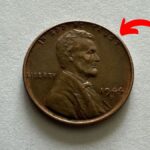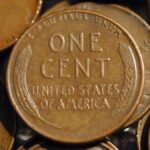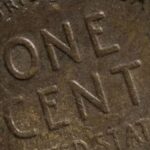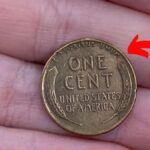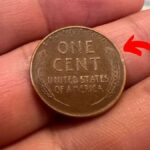The next time you reach into your pocket for change at the coffee shop, you might want to take a closer look at those quarters. In an extraordinary twist of numismatic history, a specific 1976 bicentennial quarter could be worth an astounding $7 million – more than most people earn in a lifetime. This remarkable discovery has sparked renewed interest in coin collecting and has many Americans scrutinizing their spare change with newfound attention.
Understanding the Bicentennial Quarter
In 1976, as America celebrated its 200th birthday, the U.S. Mint produced a special series of quarters commemorating this historic milestone. These quarters, easily identifiable by their dual dating of “1776-1976,” featured a distinctive design showcasing a colonial drummer on the reverse side – a patriotic nod to the American Revolution. While millions of these commemorative quarters were produced and remain in circulation today, most carry only modest value, typically selling for $5-6 on collector platforms like eBay.
The Million-Dollar Minting Error
What sets the ultra-valuable version apart is a rare minting error combined with its silver composition. While the U.S. Mint typically maintains rigorous quality control standards, occasionally errors slip through, creating highly sought-after variants that command premium prices in the collector’s market. The specific error that creates this astronomical value is exceptionally rare, making these quarters among the most valuable error coins ever produced by the U.S. Treasury.
The Broader World of Rare American Coins
While the bicentennial quarter story is remarkable, it’s just one chapter in America’s rich numismatic history. Perhaps even more impressive is the legendary 1933 double eagle quarter, featuring an unusual double tail on its eagle design. With only twelve known specimens surviving after a massive recall and melting program by the Treasury Department, these coins have achieved legendary status among collectors. The most recent sale of a privately held specimen fetched an astronomical $18.8 million in 2021, setting records in the coin collecting world.
Historical Significance of Early American Coinage
Among the most historically significant rare coins is the 1794 Flowing Hair Silver Dollar, which holds particular importance as the first silver dollar minted in the newly formed United States. This piece of American history commanded over $10 million at auction in 2010, demonstrating the immense value collectors place on coins that represent pivotal moments in our nation’s monetary history.
Finding Treasure in Modern Circulation
While the rarest and most valuable coins are typically locked away in collections or museums, there’s still hope for amateur collectors and observant citizens. Several modern coins with various minting errors or special characteristics can be found in everyday circulation. The 1972 Doubled Die Lincoln, the 2005-D 5C Speared Bison Jefferson Nickel, and the 1982 No Mint Mark Roosevelt Dime are prime examples, with values ranging from hundreds to thousands of dollars.
The Art of Coin Collection and Investment
Modern coin collecting represents more than just a hobby – it’s become a sophisticated form of investment and historical preservation. While finding a multi-million dollar coin in your change jar might be unlikely, the possibility of discovering valuable variants makes the pursuit worthwhile. Successful collectors combine knowledge of numismatic history with careful observation of minting characteristics and variations.
How to Evaluate Your Coins
For those inspired to examine their own coin collections, several key factors determine a coin’s value: condition, rarity, historical significance, and any unique characteristics or errors. Professional coin grading services can authenticate and evaluate potentially valuable specimens, providing certification that can significantly impact a coin’s market value.
The Impact of Social Media and Online Markets
The internet age has transformed coin collecting, making information more accessible and creating new marketplaces for buyers and sellers. Online platforms have democratized the hobby, allowing collectors to research, buy, and sell coins with greater ease than ever before. However, this accessibility also means increased competition for rare specimens and the need for careful verification of authenticity.
Preserving Numismatic History
Beyond their monetary value, these rare coins serve as tangible connections to American history. Each specimen tells a story about the era in which it was minted, the technical capabilities of the time, and the historical events it commemorates. Museums and private collections play crucial roles in preserving these pieces of monetary history for future generations.
A Lasting Legacy
The story of the $7 million bicentennial quarter reminds us that extraordinary value can be hidden in ordinary objects. Whether you’re an experienced numismatist or simply someone who’s gained a new appreciation for the coins in your wallet, the hunt for rare and valuable coins continues to capture imaginations and occasionally reward the observant with remarkable discoveries.
Looking to the Future
As new minting technologies emerge and collecting practices evolve, the field of numismatics continues to grow and adapt. While the most valuable coins may remain elusive, the possibility of discovering something special in everyday currency maintains the allure of coin collecting for enthusiasts of all levels. Whether driven by investment potential, historical interest, or simple curiosity, the search for rare coins remains an engaging pursuit that connects us to our nation’s rich monetary heritage.


